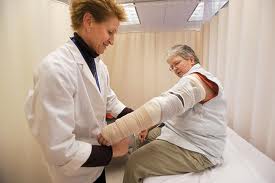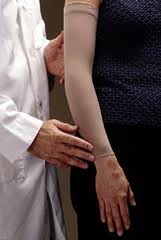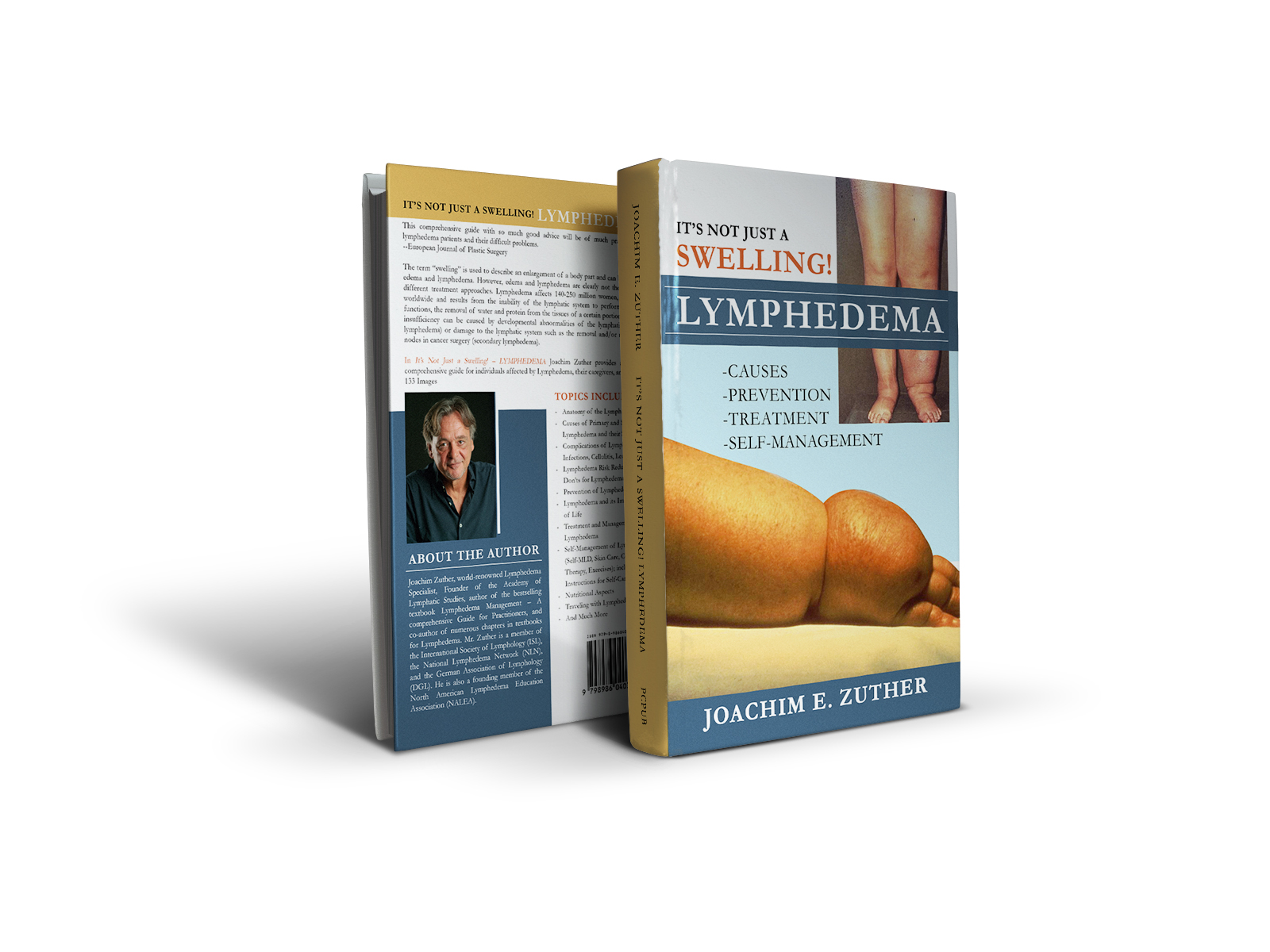 Patients affected by lymphedema graduate from compression bandages, which are in the majority of cases applied by a certified lymphedema therapist (CLT), to elastic compression garments once the affected body part is decongested; this stage is also known as phase two of Complete Decongestive Therapy (CDT), or the self-management phase.
Patients affected by lymphedema graduate from compression bandages, which are in the majority of cases applied by a certified lymphedema therapist (CLT), to elastic compression garments once the affected body part is decongested; this stage is also known as phase two of Complete Decongestive Therapy (CDT), or the self-management phase.
Phase two is an ongoing and individualized part of CDT, in which the patient assumes responsibility for maintaining and improving the treatment results achieved in phase one, the intensive phase of CDT, in which the patient is treated by a certified lymphedema therapist (CLT) on a daily basis until the swelling in the affected body part is reduced to a normal or near normal size.
Knee-high ready-made stocking with silicone border
In phase two, compression sleeves or stockings have to be worn throughout the day and become a part of the patient’s life, much like hearing aids or eyeglasses, and along with self-Manual Lymph Drainage, skin care and exercises, compression garments play a major part in this phase of the treatment.
Properly fitted and comfortable compression garments prevent the re-accumulation of fluid and preserve the treatment success achieved in the first phase of CDT. It is important to understand that compression garments will not, by themselves, reduce swelling or edema, and must not be worn on an untreated and swollen extremity.
The correct choice of garments should only be made by trained individuals with a full understanding of the pathology of lymphedema and its related conditions; these individuals can be the lymphedema therapist, a trained and certified garment fitter, or the treating physician.
Many potential problems and special needs of the individual patient must be considered and addressed in order to arrive at a comfortable and supportive garment solution. Ill-fitted and ineffective compression garments not only produce poor results but can also be dangerous to the patient.
Compression garments are available as sleeves, gauntlets or stockings for the extremities, and brassieres and vests for the trunkal portion of the body. They are manufactured in several sizes and variations (such as flat or circular knit), they are also available in several colors and can be ordered in standard sizes or be custom-made.
 It is also very important that the correct compression level, or compression class is chosen for each individual patient. Compression levels establish the compressive value the garments produce on the skin surface and are measured in mm/Hg – there are 4 levels, 1 being the lowest with 20-30 mm/Hg, and 4 the strongest compression with more than 50 mm/Hg. Compression classes 1 through 3 are available in custom and ready-made, or off-the-shelf sizes, whereas compression level 4 can only be custom ordered.
It is also very important that the correct compression level, or compression class is chosen for each individual patient. Compression levels establish the compressive value the garments produce on the skin surface and are measured in mm/Hg – there are 4 levels, 1 being the lowest with 20-30 mm/Hg, and 4 the strongest compression with more than 50 mm/Hg. Compression classes 1 through 3 are available in custom and ready-made, or off-the-shelf sizes, whereas compression level 4 can only be custom ordered.
In order to determine the correct compression level, many factors must be considered, such as age, activity level, skin integrity, as well as possible co-morbidities, such as congestive heart failure (CHF), diabetes, paralysis, or wound issues.
Support socks, also known as anti-embolism stockings, that are available in pharmacy chains such as Walgreens, CVS or Walmart, are not suitable to treat or maintain lymphedema.
These garments have compression values of much less than 20mm/Hg – lymphedema requires a minimum of 20mm/Hg.
Support stockings, or sleeves may provide some support that can be sufficient for swellings following minor injuries, such as sprains, but do not even come close to provide the support necessary to maintain the swelling associated with lymphedema.
Support garments may be less expensive than compression garments, but do not work. They simply do not contain lymphedema. Ineffective compression results in further complications and often results in frustration on the patients’ side, reducing compliance.
Patients receiving the advice from a health care provider to purchase an ineffective support garment versus a compression garment specifically geared towards the management of lymphedema should immediately terminate this relationship and seek consultation from a properly trained and certified lymphedema therapist. A health care provider familiar with the pathology of lymphedema would never recommend ineffective garments that can be found at pharmacy chains mentioned above.
The “Find a Therapist” button in the menu bar above can assist in locating a certified lymphedema therapist close to where the patient is located.
There are also some compression garments resources providing garments free of charge:
NLN Marylin Westbrook Garment Fund , Ninjas Fighting Lymphedema, Susan B. Komen (Breast Cancer related), Pretty in Pink, Brylan’s Feat Foundation (Children only)
Dear Lymphedema Blog Reader – if you like the contents on this website, please help to keep it going. A great amount of work and research is necessary to provide you with up-to-date information on this site. Your donation supports these efforts and associated administrative costs. Surplus funds will be donated to Lymphedema/Lipedema-related charitable endeavors. Please donate using the “Donate Now” button on the right upper hand of this page – Thank You!
Do you need more information on other topics on lymphedema? Use the “Index” list on the left side of this page and select the article you are interested in. You can also use the “Select Category” window on the right of this page and select the topic you are interested in. Once selected, a new page will load with a number of articles related to the topic you chose. Click on any headline of the articles and the entire article will load up for you to read.
Join Lymphedema Guru, a Facebook page solely dedicated to inform about all things related to lymphedema – news, support groups, treatment centers, and much more


 Joachim Zuther, Lymphedema Specialist.
Joachim Zuther, Lymphedema Specialist. 
